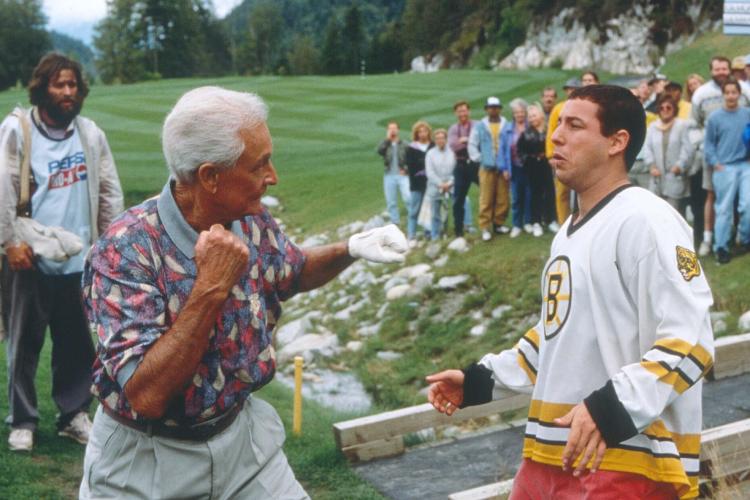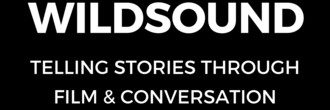What an honor it was to chat with the extremely talented Director of Photography Albert Arthur. A career spanning over 45 years, his brilliant cinematography can currently be seen on the hit AMC TV series “Better Call Saul”.
 Matthew Toffolo: You got the honor to DP the last episode of “Breaking Bad”. How did that come about? And how was the last day on set? It must have been very emotional.
Matthew Toffolo: You got the honor to DP the last episode of “Breaking Bad”. How did that come about? And how was the last day on set? It must have been very emotional.
Albert Arthur: Michael Slovis, the DP for most of the series, and who had been my gaffer many years ago, had been trying to get me to DP episodes he directed for a long time, but my schedule never worked. When it came time for him to direct his last episode, I had to say yes. Then the schedule for the finale got extended and he had a conflict. So I came back to shoot the finale. As you can imagine, the last day was very emotional for cast and crew. There were lots of tears and laughter. I felt honored to be a part of it.
Matthew: You then moved on to DP every single episode of the first season of its prequel “Better Call Saul”. Was it planned all along that you would move to the last episode of “Breaking Bad” and then start from the ground up with “Saul”? It’s like you passed the baton to yourself!
Albert: Michael had launched his career as a director, so they needed a replacement DP. Since I had already shot 3 episodes of Breaking Bad, and everyone was happy with the results, I was a natural choice.
PHOTO: Breaking Bad finale episode:

Matthew: When did you first come aboard “Saul” and break down the cinematic design of the series? It’s a little different than “Breaking” in terms of feel and tone. I’m sure there was a lot of discussion as how to make it similar but also very different than “Breaking Bad”?
Albert: I started prep three weeks before the first day of shooting. I asked Vince Gilligan and Peter Gould if the wanted to continue the style of Breaking Bad, and their answer was that they did not want a complete break, but they wanted it to be different as well. They stressed repeatedly that they felt TV shows were all starting to look the same, and that they wanted “Saul” to look like nothing else on television. They showed me stills from “The Conformist” and from Kubrick’s work. Our first day of shooting was in bright sunlight in a skate park. I kept looking for Jean-Louis Trintignant in a period tuxedo, but he was nowhere to be found.
One point of departure was that they didn’t want the handheld look that gave ”Breaking Bad” its’ nervous energy. In fact they did not want any camera movement that was unmotivated. This was quite a departure from my last few shows, where the producers would start twitching if the camera wasn’t moving at all times. It required retraining my operators to avoid movement unless absolutely necessary.
Vince kept pushing the look darker and darker, saying “we know who they are, we don’t need to see them all the time”, which is a departure from what is essentially a comedy.
PHOTO: Better Call Saul first episode:

Matthew: The opening series scenes in black & white in “Saul” is truly magnificent as it sets the tone of the entire series and hooks the audience. We know the ending, so we’re going to watch the series to see how Jimmy gets there. Can you let us in how those scenes were thought up and why you chose to do it in black and white?
Albert: I wish I could take credit for the decision to shoot the opening in black and white, but it entirely was Vince and Peter’s decision. I know they wanted Saul’s bleak present day situation in Omaha to contrast with the bright New Mexico colors of his earlier years.
Matthew: You DP’d an amazing 154 episodes of the landmark show “ER”. How many days did it take to shoot a typical episode? The show introduced the TV world the art of shooting 360 degree scenes, mostly with a Steadi-Cam. How did you bring in your own style from an already tried and true formula when you started working for the series in season 8?
Albert: ER had an established shooting style when I got there. My contribution was to rely much less on the overhead fluorescents, which were unflattering to the cast, and light the closeups individually where possible, and to bring more dramatic feature style lighting when we left the hospital.
Matthew: What’s the main thing you look for from your main crew members? Gaffer, Key Grip, Camera Operators etc…
Albert: I look for experience and social skills. We spend a lot of time together, a lot, so you want people that relate well and communicate well.
Matthew: The art of television is working fast, on schedule, and not compromising what is happening on the written page. I used to like to joke that the director on TV sets is the one who is the least experienced on set because most of the crew is there for the entire season and understands the show inside and out, while the director works at most 2-4 episodes a season. What are you mainly looking for in a director when he joins your TV crew set?
Albert: I find it ironic that I wouldn’t hire a gaffer with less than 15 features on this resume, yet directing is often an entry level position. Even experienced directors are often new to a show, so the producers look to the DP to provide a continuity of style.
I pray for directors who come prepared, collaborate well, and don’t act as if their episode is more important than the general well being of the cast and crew. I want them to prioritize their coverage so that the days can be kept to 12 hours or less. When you go past that, it takes a toll on everybody, the quality of work suffers, and people are endangered. The pros know that, and plan their days accordingly.
Matthew: Was being a Director of Photography something you always sought out to achieve in your life? Or did the job come to you?
Albert: It’s something that came naturally to me, that I have always enjoyed. I bought a 16mm camera when I graduated from college and would shoot movies for free or almost free, so I had shot 5 features by the time I was 25. Then I moved to Venezuela, where I shot 35mm features with reasonable schedules. I had to teach myself everything, but I’ve always believed in earning while I was learning. By the time I returned to the US in 1982, and shot my first Hollywood film, “Night of The Comet” I was a “new” DP with at least 10 feature credits.
PHOTO: Night of the Comet feature film:

I had originally set out to become a “filmmaker”, but I spent 2 years trying to earn enough money to get my first documentary out of the lab, so I decided to focus on making a living. Luckily, I still love what I do. When people ask me what I’m going to do when I retire, the answer is to make movies I care about with friends.That, and sip cava in Barcelona.
Matthew: Did/Do you have a Director of Photography mentor?
Albert: I assisted Jerry Cotts for a couple of years and he was very supportive and generous. When he had to leave a movie he was shooting, “Is There Sex After Death“, I took over.
Matthew: I just recently watched “Happy Gilmore”. Just a zany film that actually still holds up today. What were you thinking during production? Who’s this Sandler guy and why are we shooting this crazy scene with Bob Barker beating him up? The love interest didn’t do so bad either – Julie Bowen (Modern Family)
Albert: The script made no sense to me. I never guessed it would become a classic. Adam seemed to be learning to act on the job. The director, Dennis Dugan helped him a lot.
Bob Barker was a last minute replacement. I think they wanted Lee Trevino. No one knew what to expect as Bob Barker had never been in a movie. When we shot the first take, we knew we had struck gold. Julie clearly was going to have a career. But this Sandler guy?
PHOTO: Happy Gilmore movie. Bob Barker vs Adam Sandler:

Matthew: Have you mentored many people? Do you have examples of people on your crew, once upon a time, who have gone onto doing great things in the industry?
Albert: I would definitely count Michael Slovis, who I encouraged to shoot and steered him to a producer or two. He is now the producing/director on “Preacher”, Seth Rogen’s latest project. I have also moved a number of assistants up to operate (Tom Lohmann, and most recently, Jordan Slovin on “Saul”).
Matthew: What movie, besides the ones you worked on, have you seen the most in your life?
Albert: Apocalypse Now (director’s cut) and Touch Of Evil (director’s cut). All of Fellini.
_____
Interviewer Matthew Toffolo is currently the CEO of the WILDsound FEEDBACK Film & Writing Festival. The festival that showcases 10-20 screenplay and story readings performed by professional actors every month. And the FEEDBACK Monthly Festival held in downtown Toronto on the last Thursday of every single month. Go to www.wildsound.ca for more information and to submit your work to the festival.


Reblogged this on WILDsound Writing and Film Festival Review.
LikeLike
Great interview. Thanks for sharing.
LikeLike
Reblogged this on Festival Reviews.
LikeLike
Reblogged this on Thriller/Suspense Film and Writing Festival.
LikeLike
Reblogged this on Crime/Mystery Film & Writing Festival.
LikeLike
Reblogged this on Fantasy/Sci-Fi FILM & WRITING FESTIVAL.
LikeLike
Reblogged this on Festival for HORROR.
LikeLike
Reblogged this on Action/Adventure Film & Screenplay Festival.
LikeLike
Reblogged this on Festival for Drama in Film, Screenplays, Novels.
LikeLike
Reblogged this on Comedy FESTIVAL.
LikeLike
Reblogged this on First Scene Screenplay Festival.
LikeLike
Reblogged this on WILDsound Writing and Film Festival Review.
LikeLike
Reblogged this on WILDsound Writing and Film Festival Review.
LikeLike
Reblogged this on WILDsound Writing and Film Festival Review.
LikeLike
Reblogged this on WILDsound Writing and Film Festival Review.
LikeLike
Reblogged this on WILDsound Writing and Film Festival Review.
LikeLike
Reblogged this on WILDsound Writing and Film Festival Review.
LikeLike
Reblogged this on WILDsound Writing and Film Festival Review.
LikeLike
Reblogged this on WILDsound Writing and Film Festival Review.
LikeLike
Reblogged this on TV Screenplay Festival. Submit Today..
LikeLike
Reblogged this on WILDsound Writing and Film Festival Review.
LikeLike
Reblogged this on Under 5 minute film festival.
LikeLike
Reblogged this on WILDsound Writing and Film Festival Review.
LikeLike
Reblogged this on WILDsound Writing and Film Festival Review.
LikeLike
Reblogged this on WILDsound Writing and Film Festival Review.
LikeLike
Reblogged this on WILDsound Festival.
LikeLike